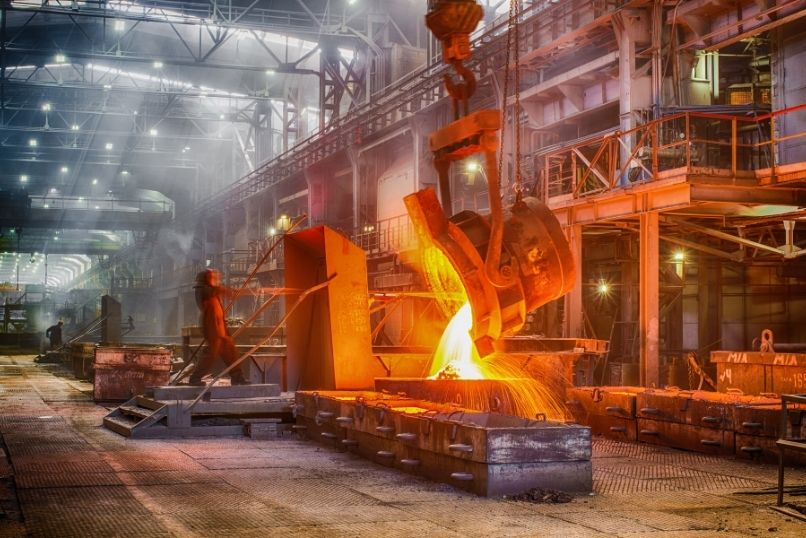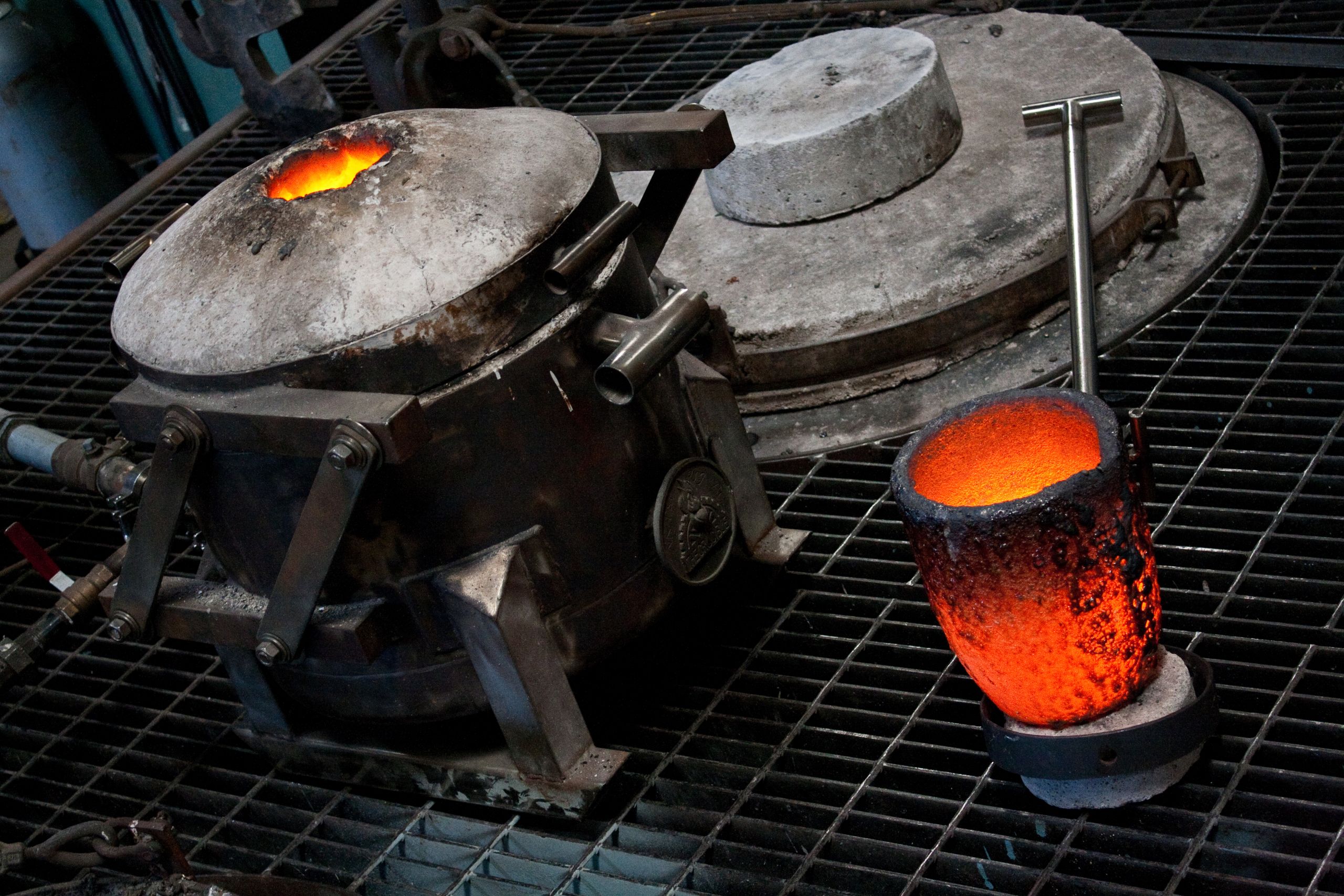Inside the Aluminum Foundry process: precision in every pour
Wiki Article
The Function of Metal Casting in Advancing Production Technologies
Metal Casting have actually significantly influenced the advancement of producing technologies. They supply one-of-a-kind design versatility, enabling the development of intricate geometries essential for numerous applications. Modern casting methods are being enhanced by innovations like 3D printing and automation. These developments not only enhance effectiveness however likewise address challenges in accuracy and sustainability. As industries continue to advance, the duty of Metal Casting continues to be essential in shaping their future. What exists ahead in this dynamic area?The Evolution of Steel Casting Methods
As the demand for accuracy and efficiency in manufacturing has actually grown, the evolution of Metal Casting techniques has actually gone through considerable change. Historically, Metal Casting started with simple methods such as sand casting and lost-wax spreading, which permitted craftsmens to produce complex forms. Gradually, advancements in innovation presented processes like die spreading and investment spreading, improving accuracy and lowering waste. Aluminum Castings. The introduction of computer-aided style (CAD) and simulation software program revolutionized the preparation phases, making it possible for manufacturers to anticipate potential issues and enhance layouts prior to manufacturing. Additionally, the advancement of new materials, such as advanced alloys and composites, has expanded the range of applications for Metal Casting. Automation and robotics have additional refined casting procedures, enhancing consistency and effectiveness. Consequently, the Metal Casting market has adapted to meet the requirements of contemporary manufacturing, concentrating on sustainability and development to stay competitive in an ever-evolving industry
Applications of Metal Casting in Key Industries
The innovations in Metal Casting methods have actually opened a broad range of applications throughout numerous markets. In the automobile industry, Metal Casting are indispensable for generating engine blocks, transmission housings, and other important elements that call for high stamina and longevity. The aerospace sector uses castings for intricate components like generator blades and structural components, making certain light-weight yet robust remedies for airplane.
Additionally, the construction sector employs Metal Casting for structural components such as beams and installations, adding to the honesty of buildings and framework. In the energy field, spreadings play an essential role in manufacturing components for wind generators and power generation tools, improving effectiveness and dependability. In addition, the clinical area gain from precision spreadings made use of in surgical tools and prosthetics, showing the flexibility of Metal Casting throughout diverse applications. This wide utilization emphasizes the importance of Metal Casting in modern-day production methods.
Benefits of Metal Casting in Modern Production
Metal Casting provide countless benefits that considerably improve modern-day manufacturing procedures. One vital benefit is style versatility; Metal Casting permits the creation of complex forms and complex geometries that are impossible or typically tough to accomplish with various other producing techniques. This capability makes it possible for makers to optimize item designs for performance and efficiency.Furthermore, Metal Casting can sustain a broad range of products, consisting of steel, iron, and light weight aluminum, which can be customized to satisfy particular mechanical properties and rust resistance needs.

Cost-effectiveness is an additional notable benefit; Metal Casting procedures can create large amounts of get rid of very little material waste, therefore decreasing production costs.
Furthermore, the sturdiness of cast steel elements adds to the long life of items, minimizing the need for frequent substitutes. In general, the benefits of Metal Casting substantially contribute to efficiency, sustainability, and innovation within contemporary manufacturing environments.
Advancements Driving the Future of Metal Casting
While traditional Metal Casting methods have actually offered the industry well for decades, current technologies are positioned to change the area. Advances such as 3D printing innovation permit quick prototyping and the production of intricate geometries that were previously unattainable. These technologies not only boost design adaptability but likewise reduce waste and reduce preparations. Additionally, the assimilation of automation and robotics in casting processes is go to these guys simplifying operations, enhancing accuracy, and enhancing employee safety and security. The development of new alloys and composite products is making it possible for the production of more powerful, lighter castings tailored for certain applications. Digital modern technologies, including expert system and device understanding, are maximizing casting parameters and predictive maintenance, driving enhanced quality assurance. Jointly, these developments are pushing the limits of Metal Casting, cultivating better efficiency and sustainability in manufacturing, and positioning the market for future development and competition.Obstacles and Solutions in Metal Casting Processes
As innovations in Metal Casting technology proceed to reshape the industry, various difficulties stay that producers have to deal with to completely take advantage of these technologies. One considerable concern is the irregularity in material residential properties, which can bring about inconsistent high quality and performance. This irregularity often arises from variations in resources and processing conditions. In addition, the climbing expenses of energy and products posture economic restrictions, pushing manufacturers to look for a lot more effective processes.To deal with these difficulties, business are significantly embracing automated systems these details and advanced simulation strategies to improve precision and uniformity. Executing high quality control measures throughout the manufacturing process likewise helps in finding flaws early. Investing in research study for alternative materials might improve and minimize costs sustainability. By resolving these challenges with cutting-edge solutions, the Metal Casting sector can enhance efficiency and keep competitiveness in the advancing manufacturing landscape.
Often Asked Concerns
What Products Are Typically Made Use Of in Metal Casting Processes?
Typical materials utilized in Metal Casting procedures include aluminum, bronze, magnesium, and iron. Each product possesses special homes that provide to different applications, enhancing the flexibility and performance of the final actors products in various sectors.How Do Environmental Rules Impact Metal Casting Procedures?
Ecological regulations oblige Metal Casting operations to embrace cleaner modern technologies and practices, usually increasing manufacturing prices. Conformity may lead to innovative processes that reduce waste and emissions, eventually advertising sustainability within the Metal Casting sector.What Are the Safety Steps in Metal Casting Facilities?
Precaution in Metal Casting centers consist of appropriate ventilation, individual protective tools, normal safety and security training, tools upkeep, and adherence to safety and security regulations, ensuring a safe environment for employees while lessening threats connected with hazardous products and procedures.Exactly How Is Quality Controlled in the Steel Casting Process?
Quality control in Metal Casting involves extensive inspections, including visual analyses, dimensional checks, and material testing. Adherence to sector standards and carrying out quality administration systems guarantees that spreadings meet specified demands throughout the production process.
What Is the Future Job Overview for Metal Casting Professionals?
The future job overview for Metal Casting experts shows up appealing, driven by improvements in modern technology and boosting demand throughout numerous industries (Aluminum Foundry). Development in automation and lasting practices will likely create brand-new opportunities in this industryHistorically, Metal Casting began with simple approaches such as sand spreading and lost-wax spreading, which permitted artisans to create Bonuses elaborate shapes. Over time, developments in innovation presented procedures like die spreading and financial investment spreading, boosting accuracy and reducing waste. In enhancement, the medical field advantages from accuracy castings used in surgical tools and prosthetics, demonstrating the flexibility of Metal Casting across varied applications. Metal Casting use various advantages that substantially improve modern production procedures. Usual products utilized in Metal Casting processes include aluminum, magnesium, bronze, and iron.
Report this wiki page